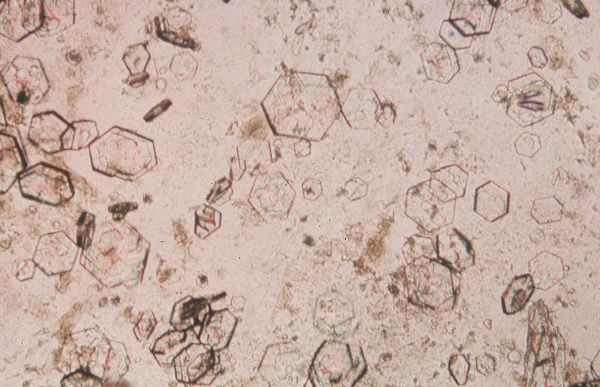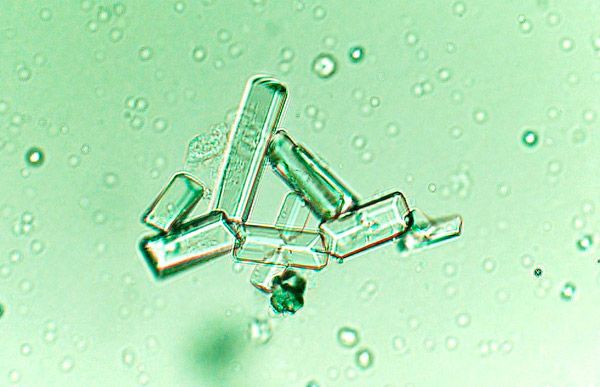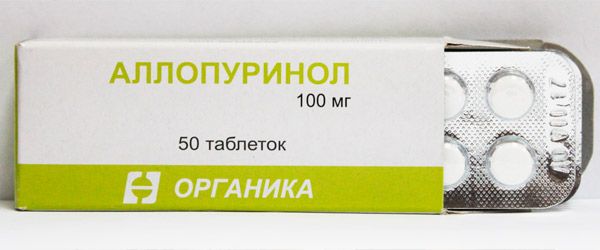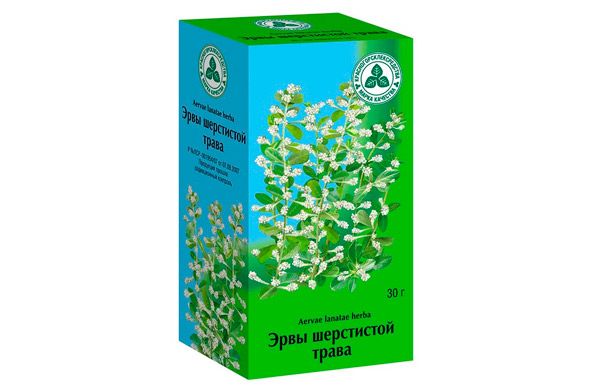Medical expert of the article
New publications
Urates in urine in children
Last reviewed: 12.07.2025

All iLive content is medically reviewed or fact checked to ensure as much factual accuracy as possible.
We have strict sourcing guidelines and only link to reputable media sites, academic research institutions and, whenever possible, medically peer reviewed studies. Note that the numbers in parentheses ([1], [2], etc.) are clickable links to these studies.
If you feel that any of our content is inaccurate, out-of-date, or otherwise questionable, please select it and press Ctrl + Enter.
Urate is a sediment of uric acid salts in urine. The appearance of a large amount of urate in urine is the first sign of metabolic disorders in a child's body, and also indicates problems in the excretory system.
If urates in a child's urine are ignored, serious consequences may arise.
Causes urate in the baby's urine
Urates in a child's urine may appear for the following reasons:
- Nutrition.
The organs and systems of the child's body are at the stage of formation and may not work perfectly, the urinary system is no exception, which may not cope with a large intake of salt, all this contributes to the appearance of urates. The formation of salt sediment is also facilitated by the use of red meat, tomatoes, strong tea, meat broth, offal, cheese, chocolate, canned fish, smoked meats, spicy foods, alcohol, especially systematically and in large quantities.
Salt precipitation is especially typical for those children who do not eat a balanced diet, eat a lot of chocolate, salty foods. However, not only the abuse of certain products can affect the composition of urine, fasting also has a negative effect on the body and can cause urates to appear in the urine.
- Decreased blood supply to the kidney (heat, chronic arterial disease, arterial thrombi, prolapsed or stretched kidney).
- Dehydration (with high temperature, diarrhea, vomiting, physical exertion, overheating and other conditions when the body loses a lot of fluid, but the child refuses to drink).
- Medicines (antipyretics, anti-inflammatory drugs, some antibiotics).
- Urogenital infections.
- Gout.
- Certain types of leukemia.
Pathogenesis
Urate in the urine of a child in the international classification of diseases does not have a separate code. Salt sediment in the urine as a result of metabolic disorders can be classified as class E00-E90 (endocrine system diseases, nutritional disorders and metabolic disorders).
The body of children produces enzymes involved in the process of excretion of uric acid salts in insufficient quantities, so tests almost always show a slight excess of the norm, which is not a cause for concern. A slight deviation is also possible due to illness or consumption of certain products, which does not pose a danger to the child's health.
But a significant deviation from the norm may indicate the development of uric acid diathesis (uraturia). The disease is associated with imperfect metabolic functions of the body, a violation of water-salt metabolism, all this does not have the best effect on the general health of children.
The formation of urates in urine occurs under two conditions: acidity greater than 5.0 and a high level of protein breakdown products in the blood plasma.
In some cases, urates are formed during prolonged stagnation of urine - the walls of the bladder absorb water, while the concentration of salts increases, if the level of salts reaches peak values, the process of formation of salt crystals begins.
The level of urates can increase for various reasons, since uric acid salts do not dissolve in water, then when the amount increases, the kidneys remove it from the body in the form of crystals, which are called urates.
The mechanism of precipitation of such sediment has not been thoroughly studied, since urine is a complex liquid that is formed after blood passes through the body’s “natural filter” – the kidneys.
Symptoms urate in the baby's urine
In children, symptoms of a malfunction of the excretory system appear quite rarely and almost always such signs are associated with congenital anomalies (amorphous kidneys, renal dysplasia, gout, etc.).
Usually, developmental pathologies are detected at early stages; in other cases, disorders can be suspected if the child has frequent vomiting or diarrhea regardless of the liquid drunk, loss of appetite and headaches, if the child eats a lot of salty foods, meat products, chocolate, cheese, drinks a lot of strong tea, tomato juice.
Hyperactivity may indicate urates in a child's urine; as a rule, such children sleep poorly, are whiny, and with uraturia, children are distinguished by faster development, compared to their peers.
It is worth noting that while the urate level is at an average level, no symptoms will be felt, since the formation of urates does not cause any specific manifestation. The sediment can be detected by laboratory testing (often urates are detected by chance).
Urate salts in the urine of a child
Urine analysis is used to identify pathological processes in the body. A doctor gives a referral for tests if any violations are suspected. The following impurities are usually detected in urine: phosphates, urates, carbonates, oxalates. But the presence of impurities in urine is not always associated with the development of serious diseases.
If all organs and systems are functioning normally, there should be no impurities in the child's urine. But sometimes metabolic processes can be disrupted, which immediately affects the composition of the urine.
The formation of uric acid salts (urates) occurs only under favorable conditions, but the reasons that lead to this can be very different - from a digestive disorder to heredity.
Urate in the urine of a child is detected quite often. Usually, sediment in the form of salts indicates a change in the water-salt balance, less often the development of serious pathologies.
The child's underdeveloped genitourinary system may not be able to cope with the amount of salt coming from food, resulting in salt sediment appearing in the urine.
Also, the formation of urates can be provoked by taking antibiotics and a lack of vegetables and fruits in the diet.
If salt deposits are detected in a child who is breastfed, the mother should reduce meat consumption and give preference to fruits and vegetables.
To reduce the level of urates, a special diet is recommended for children from 2 years old, where the main place is occupied by products rich in calcium and potassium. Red meat should be given in small quantities or completely replaced with poultry meat, vegetables with a high content of purine and oxalic acid are also excluded from the diet, dairy products, and mineral water are given to the child without restrictions.
Large amount of urates in urine in a child
There should be no urates in the urine, as well as other salts. In medicine, it is considered that a one-time increase in urates to 2 pluses is not an abnormality. If a laboratory study showed 3 or more pluses, or the urate level does not decrease even after changing the diet, an additional examination should be carried out and gout or leukemia should be excluded.
If the analysis reveals urates in the child's urine in large quantities, then you should not immediately assume the worst case scenario. Often, before taking the tests, parents forget that the day before the child ate a lot of chocolate, meat or fish, drank a lot of strong tea, could have overheated, etc. Also, if the tests are taken after an illness, the level of urates can be affected by taking medications.
After detecting a high level of urates, you should adjust the baby's menu, retake the test after some time, and do an ultrasound of the kidneys. In addition to urates, you should also pay attention to other impurities, an excess of leukocytes (more than 5), erythrocytes or other salts in the urine may indicate an infection of the urinary system.
Sometimes high levels of urates can be associated with dysbacteriosis and worms.
Particular caution should be exercised by parents who have cases of gout, obesity, joint, spinal, or vascular diseases among their relatives; in this case, it is recommended to immediately consult a pediatric nephrologist or, as a last resort, a pediatrician.

Urate and oxalate in urine in a child
Oxalates are also salt compounds, but they tend to crystallize. When passing through the urethra, oxalates injure the mucous membrane, causing pain and inflammation.
Oxalates are formed for various reasons, mainly due to the abuse of vitamin C, in particular products that contain a lot of this vitamin (rose hips, citrus fruits, radishes, sorrel), inflammatory bowel diseases, kidney diseases, and diabetes can also provoke an increase in oxalate levels.
Elevated oxalate levels can lead to bladder stones over time.
If the tests show oxalates and urates in the child’s urine, first of all, you need to adjust the diet: give more fluids, increase the amount of foods in the diet that contain B vitamins and magnesium.
First signs
Urates in the urine of a child usually manifest themselves in the form of hyperactivity, various sleep disorders (as a rule, children sleep poorly, often wake up, are capricious). At the same time, children develop faster than expected, they are inclined to children's creativity, love to read, learn new things.
 [ 15 ]
[ 15 ]
Complications and consequences
If treatment is not received in a timely manner, elevated urate levels can lead to uric acid crystals being deposited under the skin and in the joints, asthma attacks, vomiting, especially in the morning, constipation, and red itchy spots appearing on the skin (allergy tests will not reveal an allergy).
 [ 16 ]
[ 16 ]
Complications
Uric acid is the main factor that provokes gout, and high levels of urates also cause severe damage to the kidneys, which can pose a serious danger to the developing child’s body.
Often, urates are associated with a violation of the outflow of urine, which causes the expansion of the renal pelvis. Subsequently, due to the penetration of bacteria, inflammation can develop, especially in children under one year. The disease can become chronic and affect the future health of the baby.
Urate in the urine of a child precedes the formation of kidney stones, which can block the canals and cause severe pain. With large sizes, there is a risk of injury to the mucous membrane, bleeding, inflammation, development of renal failure, after some time without treatment, the organs can completely fail.
Diagnostics urate in the baby's urine
Urate levels are detected mainly during laboratory testing of urine. If high levels of salts are detected, diet therapy is prescribed, possible causes of increased urate levels are excluded, such as temperature the day before taking the tests, previous illness, consumption of large amounts of meat or salty foods, etc.
Urine analysis is prescribed several times; if each time the results show an elevated level of urates, the doctor sends you for an ultrasound or X-ray examination of the kidneys.

X-ray with a contrast agent is the safest type of diagnostics, which allows you to evaluate the structure and structure of the kidneys, identify pathological formations in them. The negative side of the method is the radiation load on the body, although insignificant. Before the study, special preparation is required to reduce the negative impact of radiation and increase the body's resistance.
Ultrasound is a less aggressive method, but often the ultrasound data is not enough.
 [ 21 ], [ 22 ], [ 23 ], [ 24 ]
[ 21 ], [ 22 ], [ 23 ], [ 24 ]
Tests
Urine analysis allows you to determine the level of salts, erythrocytes, leukocytes and other elements that can indicate problems in the body, is carried out to assess the physical and chemical indicators and study the salt sediment. Urate in the urine of a child or an adult indicates the state of the urinary system and metabolic processes.
 [ 25 ], [ 26 ], [ 27 ], [ 28 ], [ 29 ]
[ 25 ], [ 26 ], [ 27 ], [ 28 ], [ 29 ]
Instrumental diagnostics
Instrumental diagnostics refers to various types of research that are carried out using equipment – X-ray, ultrasound, ECG, MRI, etc.
This type of diagnostics is prescribed if urates in the child’s urine have been detected several times in a row.
To identify a pathology that could have caused an increase in the level of uric acid salts, ultrasound or X-ray is used; in some cases, two diagnostic methods are required to establish a diagnosis.
An X-ray of the kidney helps to establish the structure and composition of the organ, pathological formations, the use of a contrast agent allows the specialist to evaluate the functioning of the kidneys and obtain the most accurate data on their structure.
Depending on the patient's age and the suspected disease, the doctor may prescribe a simple X-ray of the kidneys or one using a contrast agent.
It is worth noting that the use of X-rays with a contrast agent requires preliminary preparation; diagnostics are carried out according to strict indications and in specialized clinics, especially in children.
There are several types of contrast X-rays: intravenous urography (injection of an iodine-containing substance into a vein, which penetrates the kidneys and is excreted in the urine), direct pyelography (injection of contrast through a catheter or injection into the kidney)
Also, to assess the condition of the kidneys, a computed tomography scan may be prescribed - a rather expensive research method, which is performed on a special device based on X-rays.
Ultrasound of the kidneys is a safer non-invasive diagnostic method. A special device allows you to evaluate the structure of the organ and blood vessels.
Ultrasound is based on echolocation, i.e. the perception of reflected high-frequency signals, in this case ultrasonic waves.
What tests are needed?
Differential diagnosis
Differential diagnostics is the most important part of making a correct diagnosis. This diagnostics allows a specialist to distinguish one disease from another with almost 100% accuracy.
Urates can form in a child’s urine for various reasons, so in this case it is extremely important to conduct a full examination and promptly identify serious pathologies.
Urates can be associated with the development of such dangerous diseases as gout, genitourinary infections, leukemia, and a specialist must correctly assess the information about the disease and exclude diseases with similar symptoms.
The correctness of the diagnosis depends on many factors - the experience and knowledge of the doctor, his logical thinking. Differential diagnostics can only be carried out if there is complete information about the patient's condition and a correct assessment of the available data.
Who to contact?
Treatment urate in the baby's urine
The main treatment for elevated urate levels in urine is diet.
Diet therapy is prescribed regardless of the complexity of the situation; it is recommended to increase the consumption of liquids, vegetables, fruits, especially those containing B vitamins.
If urates in the urine of a child were detected late and the process of formation of urate stones began in the kidneys, drug treatment is prescribed - diuretics, anti-inflammatory drugs, trace elements of potassium and magnesium.
Medicines
Diet is the main treatment for urates in urine. But in some cases, medications may also be prescribed. As a rule, drug treatment is effective if the kidneys have not yet begun to form stones.
Blemaren - the main action of the drug is aimed at alkalizing urine, due to which uric acid dissolves more easily and is excreted with urine. Blemaren also reduces calcium excretion and crystal formation, improves the solubility of oxalates in urine.
From 2 to 6 tablets are prescribed per day (depending on age). The drug is available in the form of effervescent tablets, which must be dissolved in water before taking.
It should be taken after meals, the daily dose should be evenly distributed throughout the day.
Contraindicated in urinary tract infections, high blood pressure, renal failure (acute or chronic), allergic reactions or hypersensitivity to the components of the drug.
Allopurinol (analog of hypoxatin) – disrupts uric acid synthesis, reduces urate levels in urine, dissolves urate deposits and prevents kidney stones. Prescribed individually, depending on the concentration of urates in urine. Children are recommended from 100 to 400 mg per day.

While taking the drug, nausea, vomiting, allergic reactions, increased blood pressure, headaches, dizziness may occur, and very rarely swelling, weakness, convulsions, visual impairment, fever, hair discoloration, and blood in the urine may occur.
Urolesan or Kanefron may also be prescribed, which improve urine flow and remove salts.
Folk remedies
In folk medicine, the herb pol-pala or woolly erva is widely used for kidney diseases; it is suitable both for independent treatment and as part of complex therapy.
Pol-pala comes from the island of Ceyorn, and locals claim that this herb is essential for those living in high radiation areas.

The most useful are the leaves collected in spring, which are dried in a dark, ventilated place. It is best to store the leaves in paper bags or linen sacks.
This herb has been known for its medicinal properties since ancient times, it normalizes metabolic processes and sugar levels in the body, increases immune defense, and lowers blood pressure. With regular use of the infusion of the grass of the half-pala, the general well-being and complexion improve, skin rashes disappear, the work of the digestive and nervous systems is normalized, slags and toxins are removed.
 [ 35 ], [ 36 ], [ 37 ], [ 38 ]
[ 35 ], [ 36 ], [ 37 ], [ 38 ]
Herbal treatment
Urate in the urine of a child, first of all, can indicate improper nutrition, so the main treatment is dietary nutrition. Herbal treatment in childhood should be carried out only after consultation with a doctor, since most herbs are contraindicated for children.
Thus, the herb pol-pala, which has salt-removing, antispasmodic, diuretic, anti-inflammatory properties, is not prescribed to children under 12 years of age, as strong allergic reactions are possible.
After consulting with a doctor, you can use herbal infusions in addition to the diet, which will help normalize metabolic processes in the body.
For example, a good remedy is a collection of lingonberry leaves, black currants, birch leaves, field horsetail roots, and couch grass (40 g each).
Pour 1 tbsp of the mixture into 250 ml of boiling water, simmer over low heat for 3 minutes, strain and cool. Drink 3 times a day after meals (or as recommended by a doctor). It is recommended to prepare a new portion every day.
Homeopathy
Homeopathic medicines have recently become very popular. Before prescribing a medicine, the doctor takes into account the patient's characteristics, the nature of the disease, so in each individual case, individual treatment is prescribed.
The doctor must monitor the treatment and, if necessary, adjust the dosage or change the treatment regimen.
For urates in a child's urine, Lithium benzoicum, Barberry, and Goldenrod can be used.
Diet for urates in urine in children
If urates are detected, a dietary diet is prescribed; the total caloric content of the diet should be 2800 kcal per day.
Contraindicated: fatty meat, offal, fish, canned food, beef broth, cocoa, chocolate, water with a high content of calcium salts.
Limit low-fat fish, spicy and hot dishes, spinach, cabbage, legumes, and salt.
Vegetables, fruits, dairy products, pasta, eggs, pumpkin, watermelon, and porridge (buckwheat, wheat) are allowed in any quantities.
If urates and oxalates are detected in a child’s urine, then potatoes and citrus fruits should be consumed in moderation.
The child should drink at least 2 liters of water per day, the amount of liquid should be increased.
Prevention
If urates in a child's urine are left untreated, urate stones may subsequently form in the kidneys and cause blockage of the ureter or a renal abscess.
Prevention of this pathology is proper nutrition (eating more vegetables, fruits, cereals). You also need to drink enough liquid to avoid dehydration, especially in hot weather.
Particular attention should be paid to the health of the genitourinary system - avoid hypothermia and infections.
Forecast
If urates in a child's urine are left unattended, this can provoke the deposition of uric acid crystals under the skin, in the joints. The development of the disease can cause asthma attacks, constipation, the appearance of red itchy spots on the skin (signs of allergy).
Urate in the urine of a child is usually a sign of poor nutrition. The pathological condition requires mandatory correction in the form of a change in diet, otherwise, urolithiasis or gout may develop.
Использованная литература

